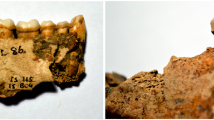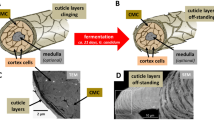Abstract
DRY seaweed contains 15–40 per cent of alginic acid1, which is readily extracted with sodium carbonate solution2. Sodium alginate was available in powder form before the War, but no serious attempt had been made to examine its possibilities as a raw material for the manufacture of rayon, despite the existence of abundant supplies of seaweed off the west coasts of Scotland and Ireland, and the ease with which filaments are obtained when a solution of sodium alginate is extruded into baths containing inorganic acid or a salt of a suitable polyvalent metal. Unfortunately, these favourable characteristics were overshadowed in the minds of early observers by the fact that the salts of alginic acid—or such of them as were examined—were found to be soluble in solutions of soap and soda. There seemed to be little purpose in devising satisfactory methods of spinning alginate rayons when the fabrics made therefrom would dissolve in the solutions commonly used in laundering textile materials. Furthermore, the prospect of producing alkali-resistant alginate rayons must have seemed remote in the absence of exact information about the constitution of alginic acid.
This is a preview of subscription content, access via your institution
Access options
Subscribe to this journal
Receive 51 print issues and online access
$199.00 per year
only $3.90 per issue
Buy this article
- Purchase on Springer Link
- Instant access to full article PDF
Prices may be subject to local taxes which are calculated during checkout
Similar content being viewed by others
References
Lunde, Heen and Öy, Koll. Z., 83, 196 (1938).
Stanford, J. Soc. Chem. Ind., 3, 297 (1884); 4, 518 (1885); 5, 218 (1886).
Nelson and Cretcher, J. Amer. Chem. Soc., 52, 2130 (1930).
Speakman and Chamberlain, J. Soc. Dyers and Colour., 60, 264 (1944).
Cunningham, Chamberlain and Speakman, Brit. Pat. Applic. No. 9118 (1942).
Astbury, see J. Soc. Dyers and Colour., 60, 265 (1944).
Hirst, Jones and Jones, J. Chem. Soc., 1880 (1939).
Rose, Ph.D. Thesis, University of London, 1937.
Speakman, Brit. Pat. 541,848 (1941).
Chamberlain, Johnson and Speakman, J. Soc. Dyers and Colour., 61, 13 (1945).
Speakman, Brit. Pat. 541,847 (1941).
Speakman, Brit. Pat. 545,872 (1942).
Race, Rowe and Speakman, J. Soc. Dyers and Colour., 55, 69 (1939).
Speakman and Chamberlain, Brit. Pat. Applic. No. 432 (1942).
Johnson and Speakman, Brit. Pat. 550,525 (1943).
Author information
Authors and Affiliations
Rights and permissions
About this article
Cite this article
SPEAKMAN, J. Seaweed Rayon. Nature 155, 655–657 (1945). https://doi.org/10.1038/155655a0
Issue Date:
DOI: https://doi.org/10.1038/155655a0
This article is cited by
-
The chemistry of brown algae
Economic Botany (1954)
-
Cell walls and synthetic fibers
Economic Botany (1947)
Comments
By submitting a comment you agree to abide by our Terms and Community Guidelines. If you find something abusive or that does not comply with our terms or guidelines please flag it as inappropriate.



